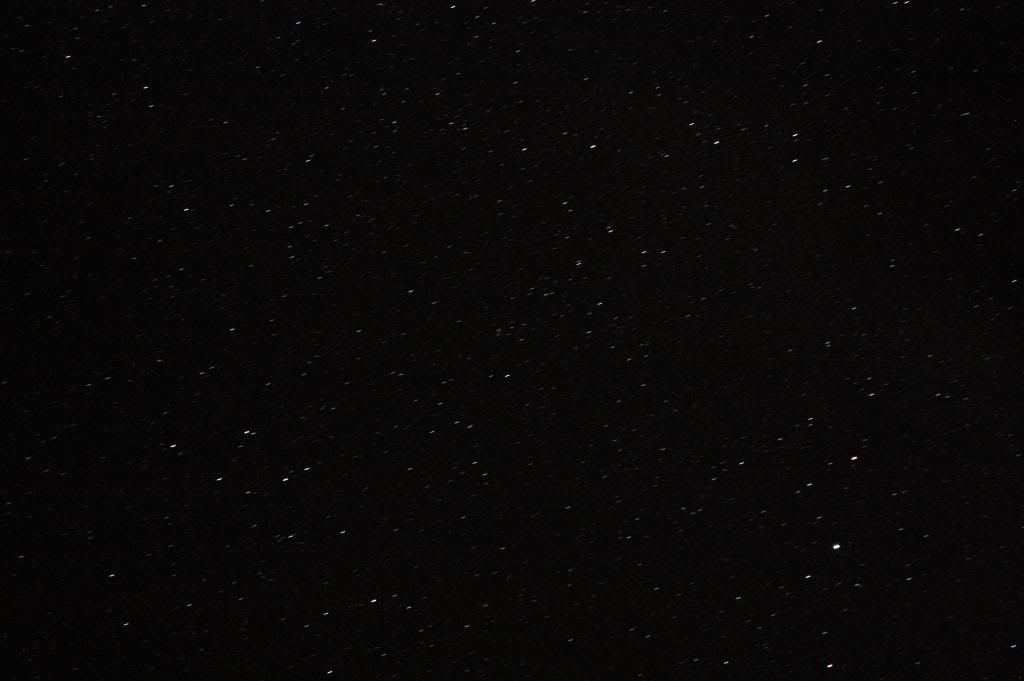 |
| Delphinius, Sagitta, and Altair, Canon Rebel Xsi with 18-55mm lense, 25 second exposure, ISO 1600 |
 |
| Sagittarius and M8 Canon Rebel Xsi with 18-55mm lens, 25 second exposure, ISO 1600 |
Date Time: September 27, 2013 2030-2100hrs
Location: Little Lepreau Basin, Little Lepreau, NB
Weather: 8 degrees Celsius, clear no wind
Equipment: Canon Rebel DSLR camera with 18-55mm lens, 20x80 binoculars, and tripod.
Attendance: Myself
Objective: To locate, view and image M8 The Lagoon Nebula.
Report: The weather and viewing conditions on this evening were almost perfect. No flies, no wind and it was almost as comfortable as sitting in the living room, although were was some dew on everything when the equipment was brought in.
Sagittarius was the prime target area on this evening because it will not be up in the evening much longer. With the prevailing weather and bug situation being what it has been, this constelation is a rare treat to view, as it lies in the direction of the center of our Galaxy. This is important because that is where a lot of nice deep sky obects lie. Objects like M8, M20 and M17.
The camera was set up first for a long exposure image of Sagittarius, which was low in the SSW at around 2030hrs. It after the first 25 second exposure image was taken then observed in the digital view finder of the camera, when M8 was first observed. After viewing the image, a mental note of where M8 was located was made so that further observing with the binoculars later.
After imaging Sagittarius, the camera was pointed in the direction of Dephinius, Sagita and the bright star Altair. This area was important, because there was a bright super nova in this region about a month ago. A 25 second exposure was taken of this area.
At this point the 20x80 binoculars where set on the tripod. M8 was located and observed, to the west of Sagittarius. It showed up nicely in the binos as a bluish, reddish cloud that looked like a smaller M42. After scanning this area, it was impressive how many stars show up in the milky way cloud.
After viewing Sagittaruius in the binos, Cassiopeia and M31 were the next target areas. The viewing was so good that M31 could easily be seen with the naked eye. With averted vision the whole galaxy showed up, which was shocking to see how big it really is. It is easily bigger than the full Moon, although really dim, it is a sight that will not be soon forgotten, for it is rare for the conditions to be good enough to find this deep sky object with the naked eye. Actually, this is how this observer determines how good the viewing conditions are...If you can find M31 with the naked eye, you have an excellent night for observing.
While scanning M31 with the binos, two satelites went right through the viewer. They could not be seen with the naked eye, but would only show up in the binos.
A rather dim shooting star was observed, going from west to south east high over head.
